Family trees are more than just a tool for understanding genealogical relationships. They can also serve as a powerful resource for analyzing career paths and legacy development. By mapping out key family members and their achievements, individuals can gain valuable insights into their professional progress, familial influences, and long-term impact. Start your journey today with Boardmix’s free blank family tree templates, and easily create a visual representation of these invaluable legacies.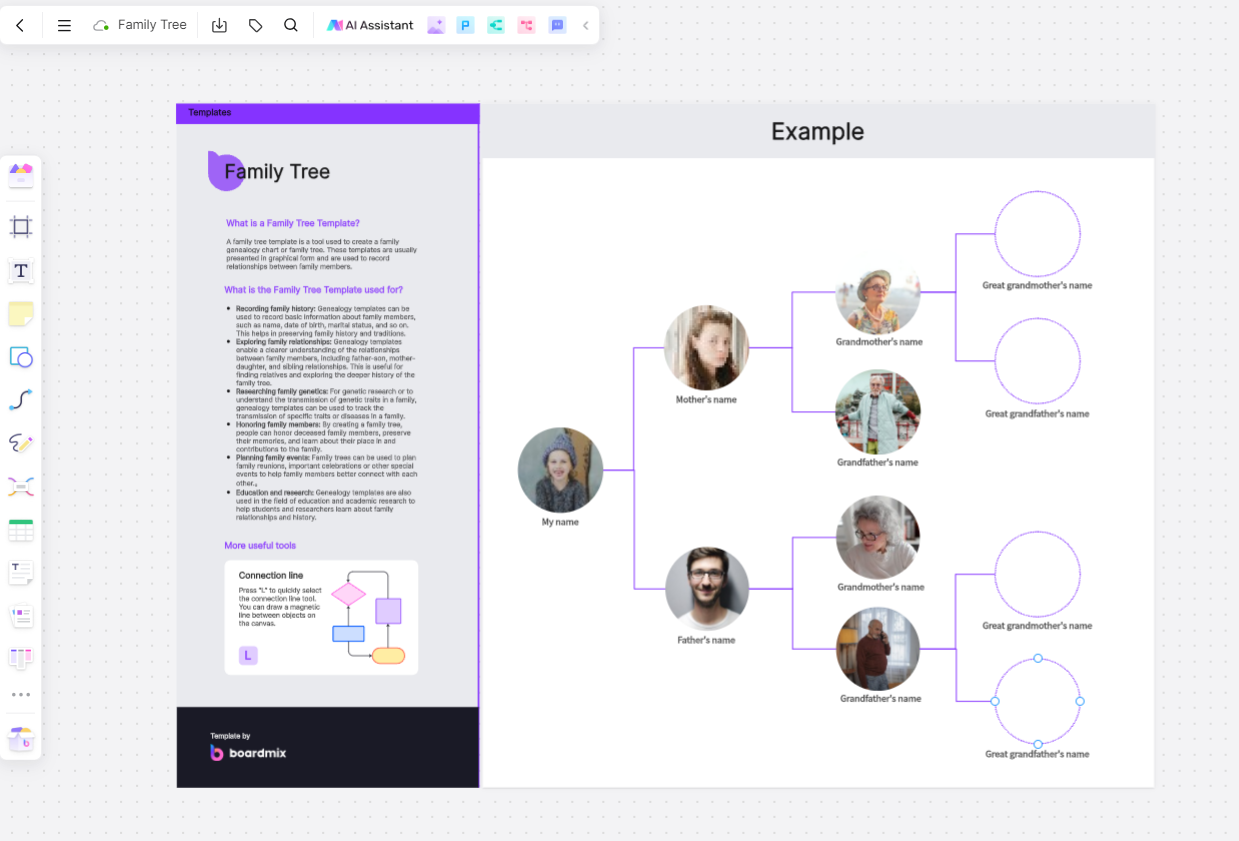
What is a Family Tree?
A family tree is a graphical representation of family relationships and connections over several generations. It traces the lineage of individuals, highlighting important milestones, relationships, and familial legacies. Beyond its traditional use for genealogical purposes, a family tree can also track career achievements and professional milestones, shedding light on how family history and heritage influence one's career journey and contributions. Family trees provide an easily understandable structure for analyzing the trajectory of both personal and professional lives.
What Are the Key Components of a Family Tree?
Family trees are structured using a few essential elements, each playing a vital role in creating a comprehensive and informative map of family history and career progression. These components include nodes, branches, generations, connections, and relevant dates or events.
- Nodes: These represent individuals or key family members. In career and legacy analysis, nodes can symbolize a person’s professional milestones, achievements, or personal developments.
- Branches: These connect family members to each other. Branches can indicate relationships between individuals, such as parent-child, sibling, or mentor-mentee. In career terms, they can illustrate the connections that shape an individual’s professional network and influences.
- Generations: Family trees typically include multiple generations, allowing for the identification of trends or patterns across time. Generational analysis can help trace career paths that span decades and show how family history impacts present-day achievements.
- Connections: The links between individuals can be direct or indirect, showing mentorships, collaborations, or partnerships. These connections offer insights into how relationships contribute to career growth and legacy building.
- Dates and Events: Key dates, such as birth dates, milestones, career achievements, or pivotal moments in family history, provide a timeline that helps contextualize professional growth and familial impact.
Why Is It Essential to Use Family Trees for Career and Legacy Insights?
Family trees are a valuable tool for tracking both career and legacy, providing insights into how one’s professional life is shaped by familial influences. Below are several reasons why family trees are essential for career and legacy analysis:
- Understanding Family Heritage and Influence: A family tree helps highlight the cultural, social, and professional backgrounds that influence career choices. By examining generational history, individuals can uncover inherited skills, values, or knowledge that shaped their professional paths.
- Tracking Career Progression: Career progression often follows family patterns, especially in family-owned businesses or professions with multi-generational involvement. Family trees allow for the clear tracking of career achievements over time, showing how a legacy is passed down and adapted.
- Identifying Patterns and Trends: Family trees allow for the identification of recurring trends within a family’s career choices or achievements. This could include identifying multiple generations that followed a particular career path or the common challenges they faced.
- Highlighting Achievements and Contributions: Family trees are a great way to showcase the professional accomplishments of various family members. They can reveal the legacies left by past generations and how they shaped future careers.
- Building a Legacy Strategy: By understanding the history of a family’s professional achievements, individuals can create a strategy for building their own legacy. Family trees help plan how to continue or expand on the achievements of past generations.
How to Perform Career and Legacy Analysis with Free Blank Family Tree Templates on Boardmix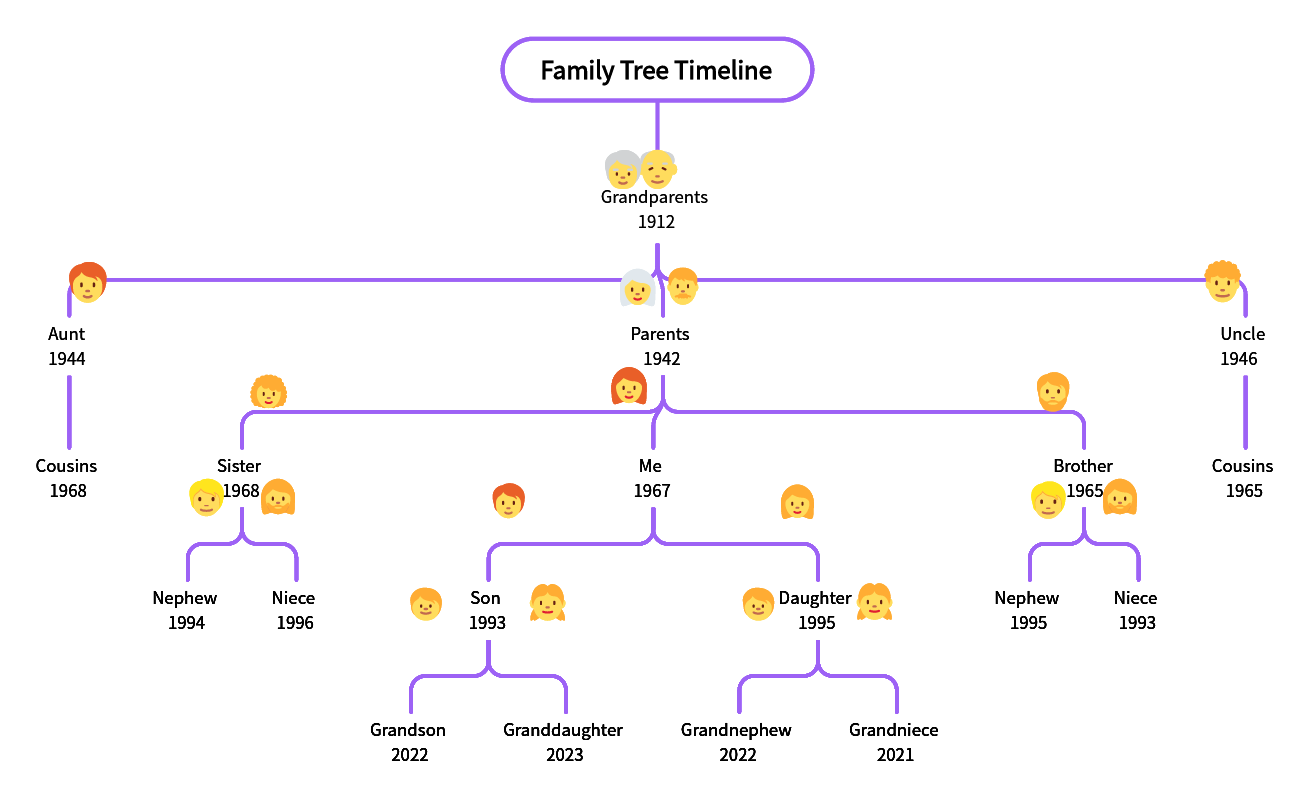
Finding a good family tree creator is important. Boardmix offers a range of free blank family tree templates that can be easily customized to suit your career and legacy analysis needs. Here’s how you can use these templates to gain insights into the professional path and legacy building:
Tips for Creating a Career and Legacy Analysis Family Tree on Boardmix
- Select a Family Tree Template
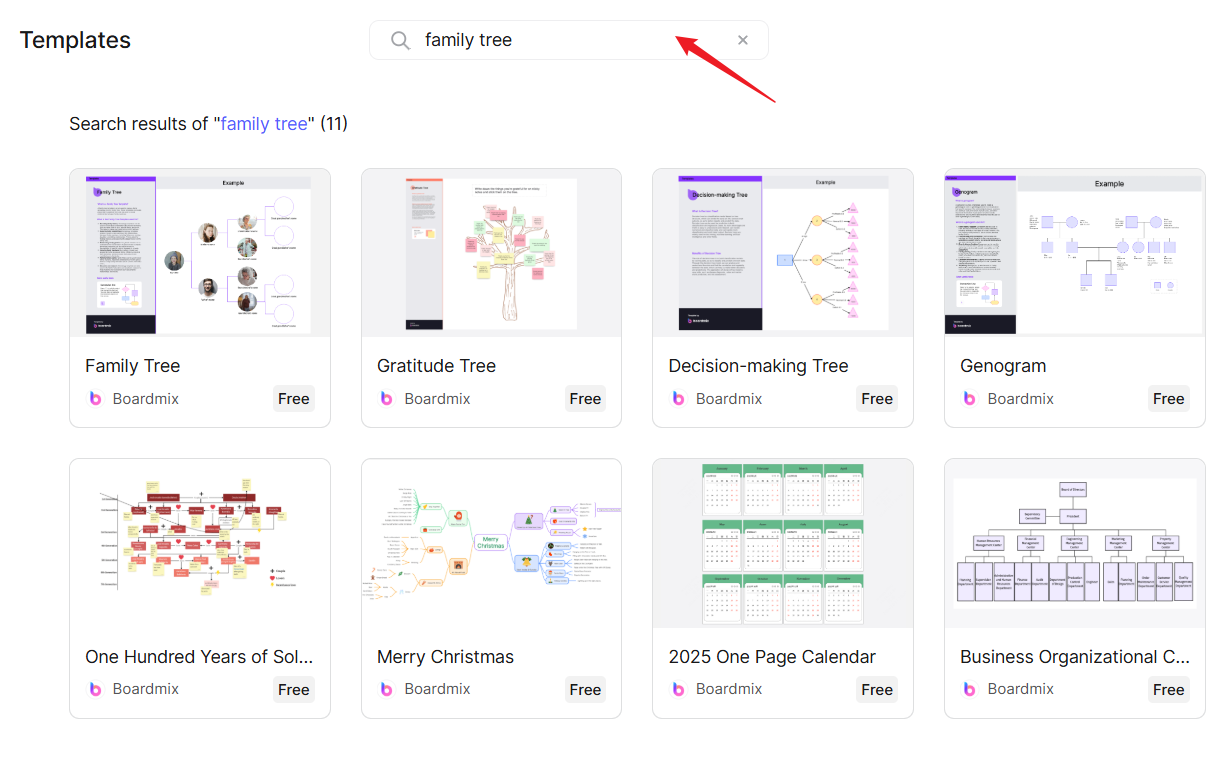
Begin by choosing a suitable family tree template from Boardmix's wide variety. Whether you're analyzing a single lineage or a network of influential families, selecting the right structure is essential for clarity.
- Organize Key Data
Collect relevant career milestones, dates, and achievements of individuals within the family. Ensure that you have information about their roles, career progression, and legacy contributions to visualize a clear path of their professional journey. - Highlight Key Relationships and Milestones
Use nodes to represent individuals and connect them through branches to show generational shifts. Add milestone events, such as promotions or significant contributions, along the tree to track career progression and legacy-building moments. - Customize for Deeper Insight
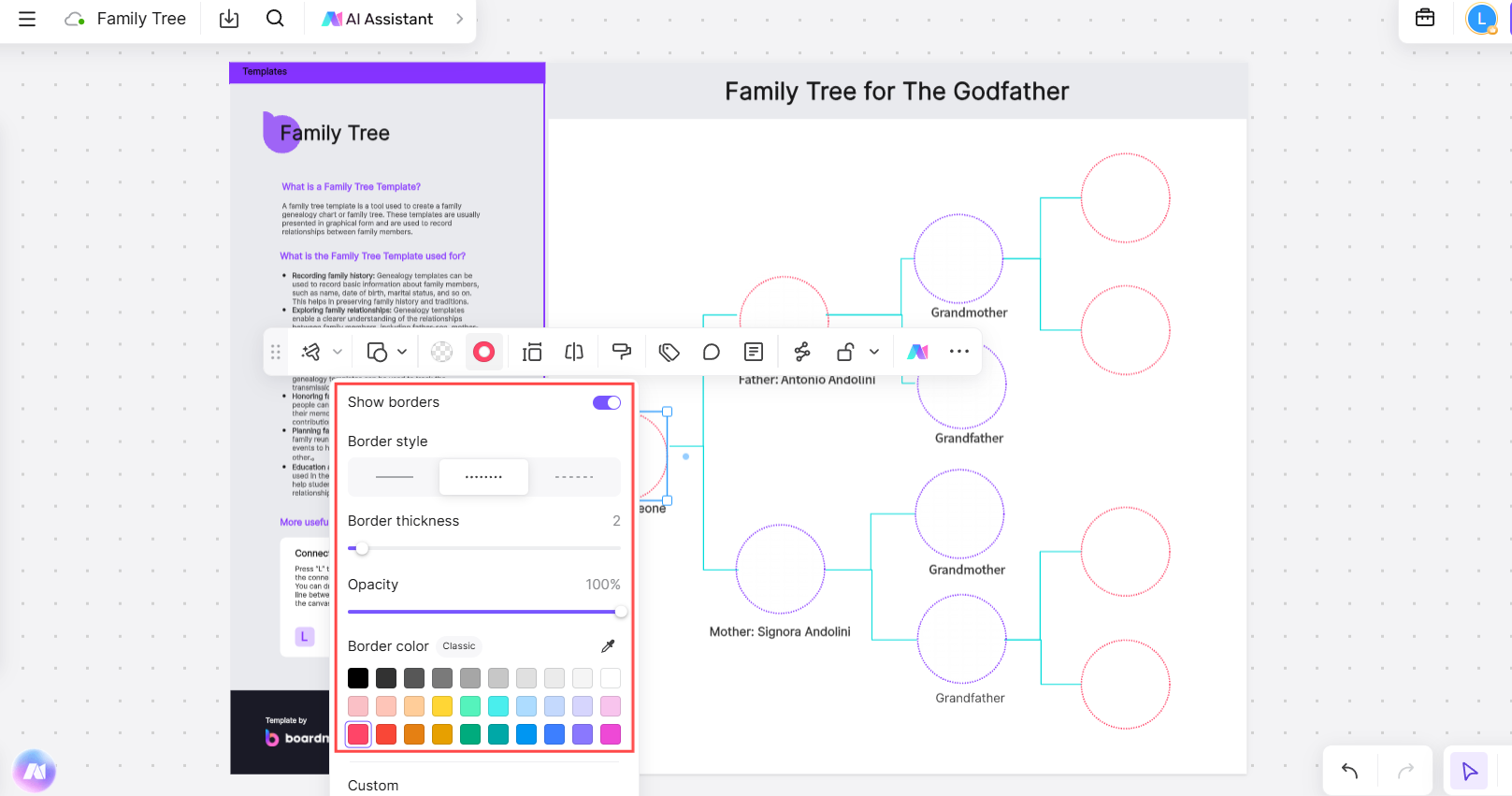
Enhance the family tree with photos, icons, or color coding to represent different generations, career phases, or achievements. This will make the analysis visually engaging and help highlight important patterns or connections within the family legacy.
- Collaborate and Share
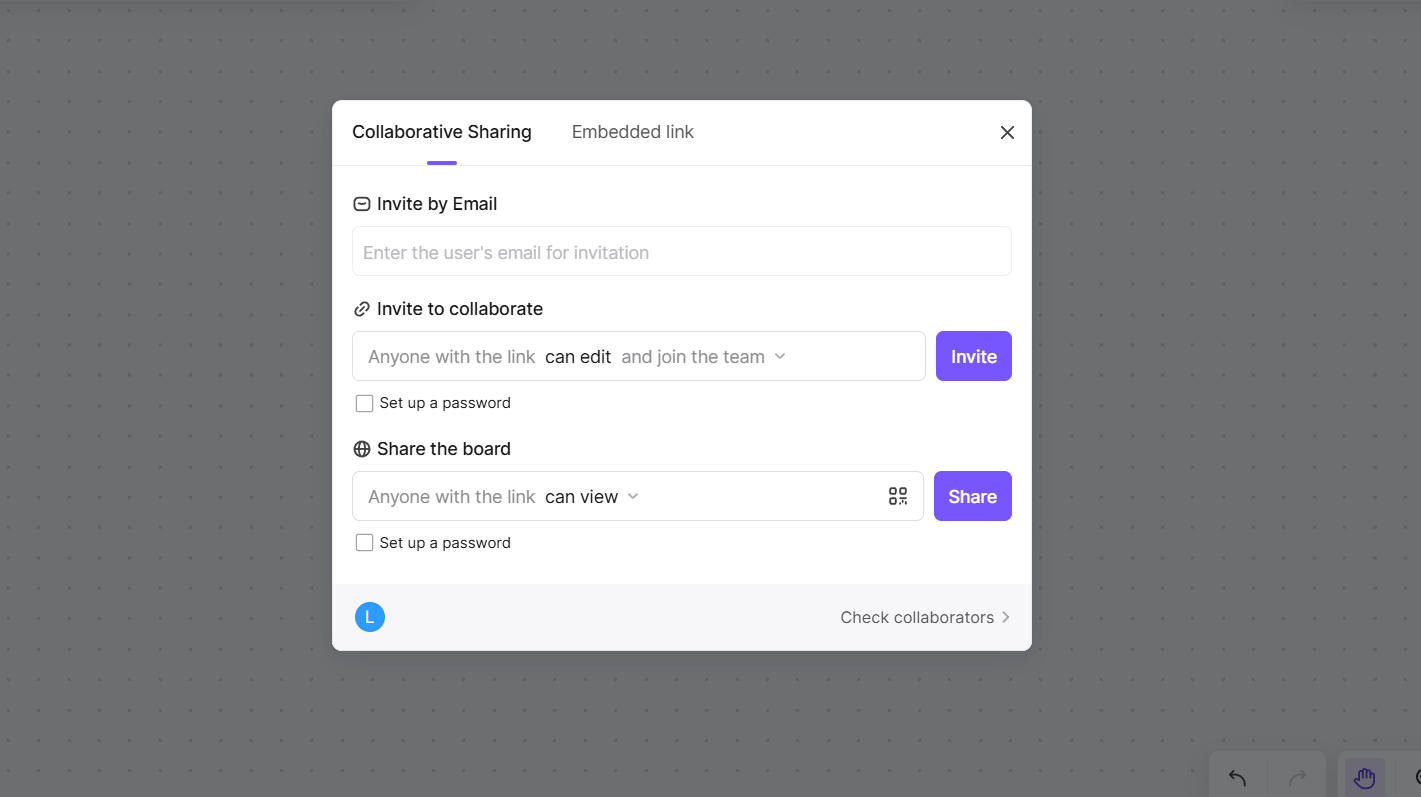
Take advantage of Boardmix’s collaborative features by sharing the family tree with colleagues or experts. Their input can help uncover new insights, leading to a more comprehensive analysis of career progression and legacy development.
Family Tree Examples for Career and Legacy Insights
Here are some family tree examples that provide deep insights into legacy building and career progression across generations:
Rothschild Family Tree
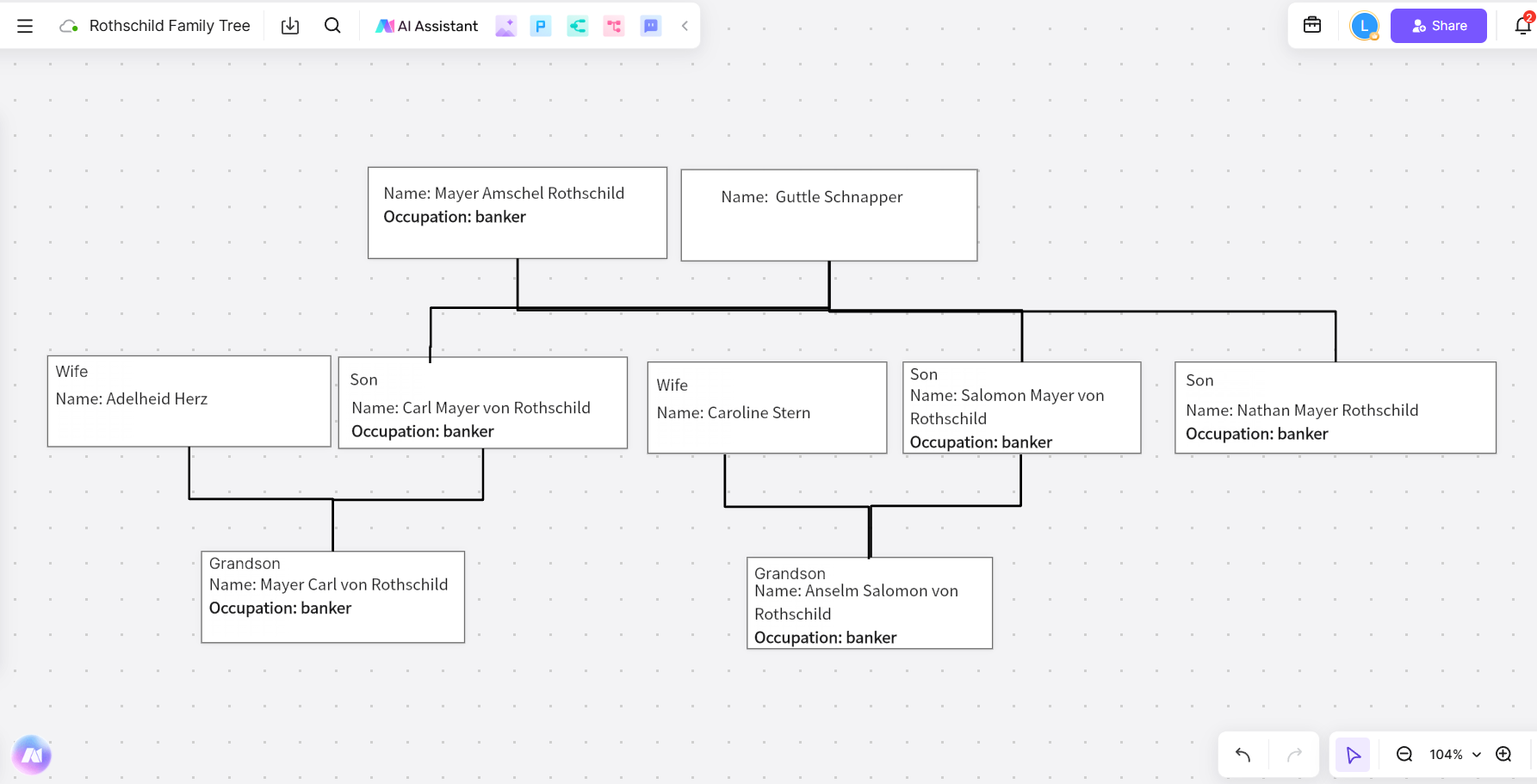
The Rothschild family tree traces back to Mayer Amschel Rothschild, the founder of a banking empire. His five sons expanded the business across Europe, creating a financial dynasty. Analyzing the family tree helps track the strategic decisions that built the Rothschild fortune, highlighting the family's involvement in global finance and politics. Each generation's influence on international investments and banking decisions shows how they maintained power and wealth for centuries, ensuring a lasting legacy in global finance.
The Medici Family Tree
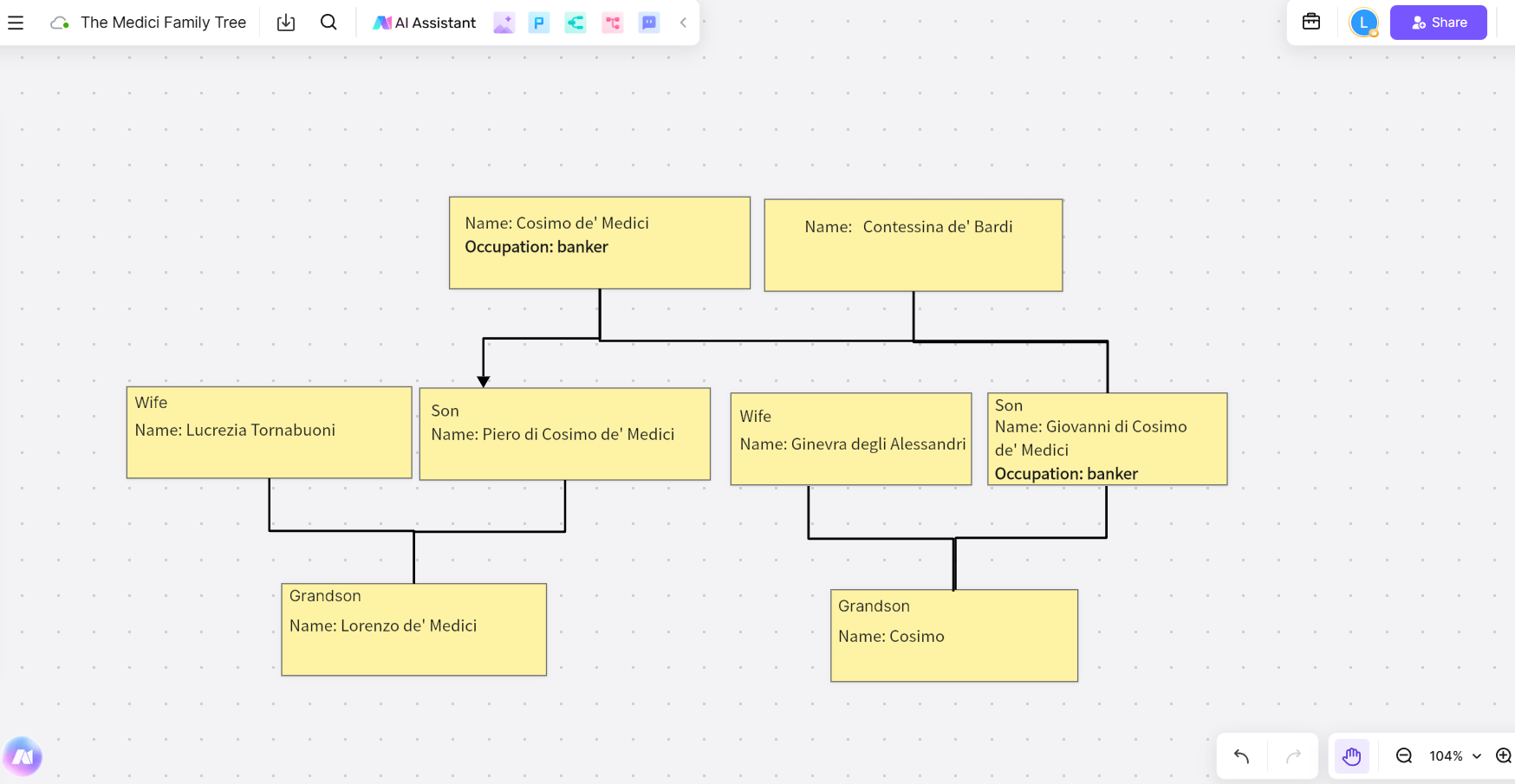
The Medici family tree starts with Cosimo de' Medici, who established the family’s banking empire and patronized the arts. The family tree shows how figures like Lorenzo de' Medici fostered the Italian Renaissance, influencing art, culture, and politics. Tracing their contributions reveals how the Medici family's strategic partnerships and investments in art and politics solidified their influence over Florence, helping them leave a cultural and political legacy that shaped Europe for generations.
The Walton Family Tree
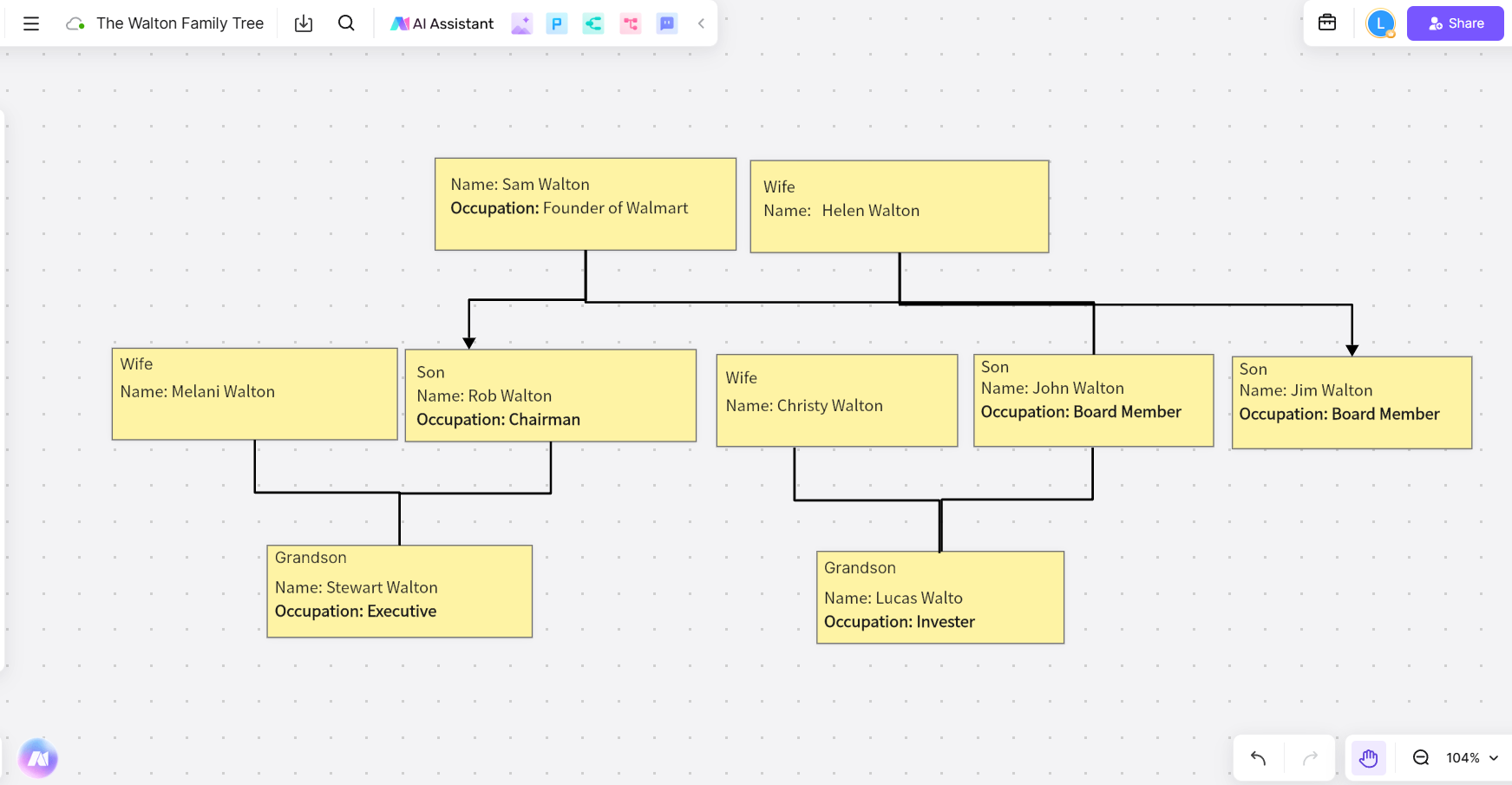
The Walton family tree begins with Sam Walton, the founder of Walmart. His business vision transformed retail, and his descendants continued to expand Walmart globally. The family tree tracks key events and business decisions that have shaped Walmart’s success. Each generation’s contributions helped maintain Walmart's market leadership, showing how the Walton family strategically expanded the business and created a lasting legacy in global commerce, reshaping the retail industry worldwide.
The Du Pont Family Tree
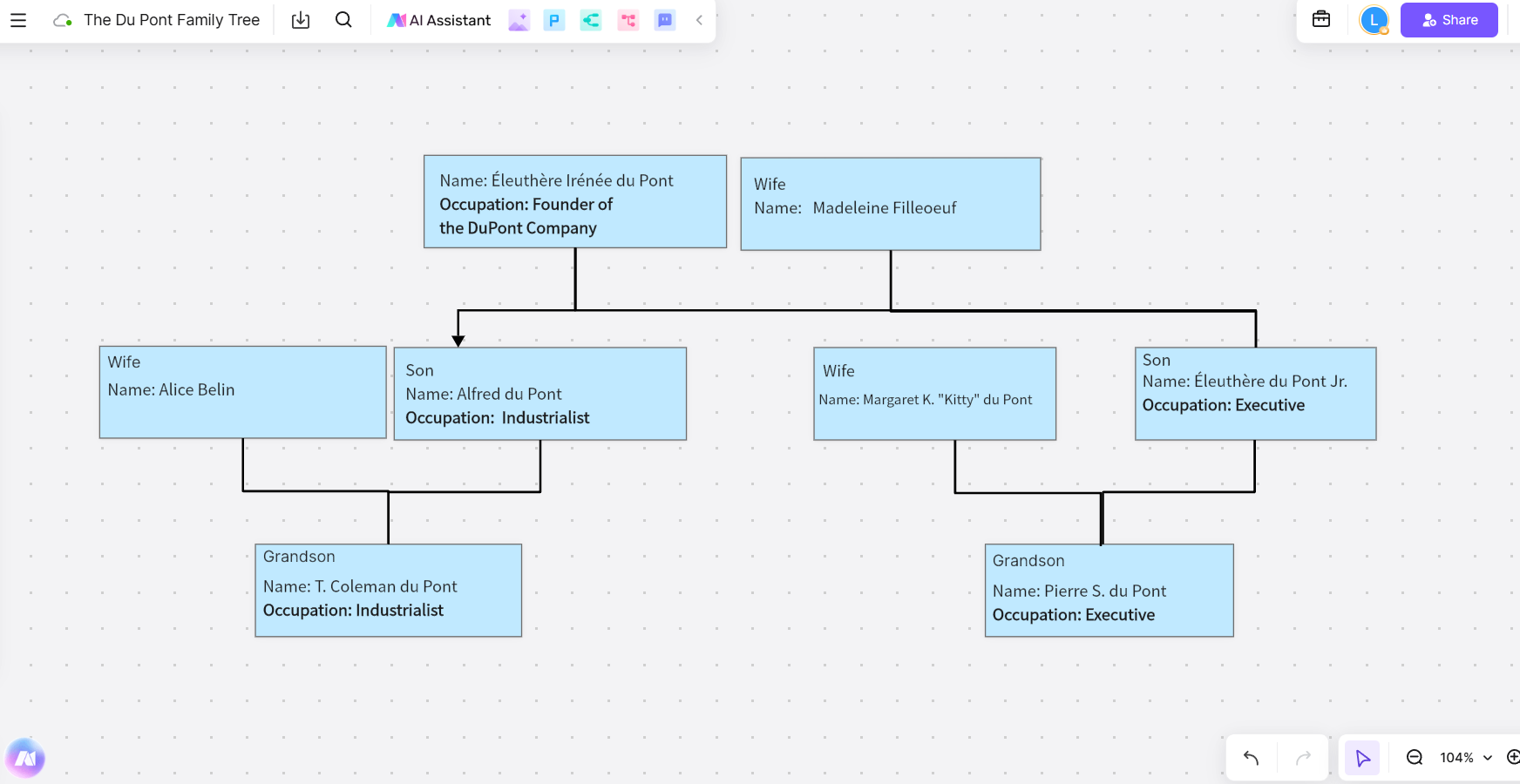
The Du Pont family tree follows the legacy of Éleuthère Irénée du Pont, who founded the DuPont Company. Tracing each generation’s impact, the tree highlights their contributions to chemistry, science, and industry. The family’s innovations in chemicals and materials helped shape industries, and their political and economic influence played a role in their long-lasting legacy. Analyzing the tree reveals how the Du Pont family maintained power and continued to innovate across generations, ensuring their place in history.
Conclusion
Family trees are an invaluable tool for analyzing career paths and building legacies. By mapping out family relationships and achievements, individuals can uncover patterns, understand familial influences, and develop strategies for future success. With Boardmix’s free blank family tree templates, you can effortlessly visualize career and legacy journey, track progress of famous families, and collaborate with others to gain deeper insights. Start using Boardmix today to better understand famous families’ professional history and explore their enduring legacies.









